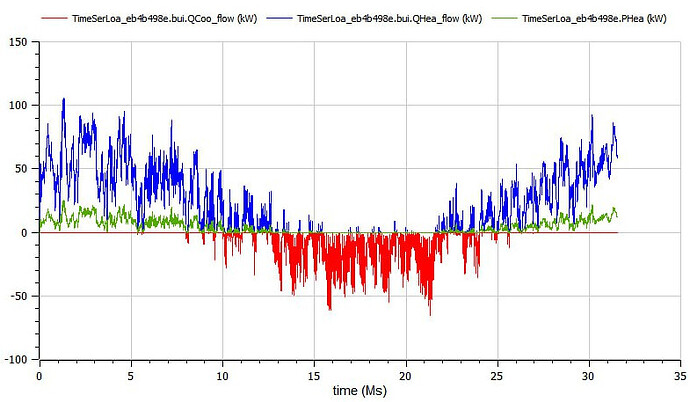Hi all, with the GHE_example to simulate District Energy Systems, I do not fully understand the following. It is supposed that when a GHE is connected to the DF Model to GeoJSON, it should create a system_params with fifth-generation properties according to the dragonfly_energy documentation: def to_des_param_dict(self, buildings, tolerance=0.01): “”"Get the DES System Parameter dictionary for the ThermalLoop.
However, in the example, when the DF Model to GeoJSON block is launched, a system_params is created with a configuration like that of the fourthGenThermalLoop, with the following values.
Yet, when the simulation is launched and the Modelica file is obtained, everything works fine. The only issue is that the values indicated in the system_params do not fully match with the values of the ETS or the heat pump in open Modelica.
I do not fully understand how the Modelica file is formed or, for example, if changing the loop from OnePipe to TwoPipe, it no longer simulates anything. But I would like to understand if the system_param is being created correctly and if there is any way to modify it so that when it is a 5g, the heat pump placed in each house is for both DHW and Heating as well as Cooling. Since currently, it only has COP for DHW and Cooling, which I do not fully understand where it is defined in the JSONs, and for cooling, it seems to do free-cooling with a supply temperature of 18 degrees.
As can be seen in the following image, the energy consumption of the heat pump is in green, and the energy delivered by the heat pump to the network both in winter (blue) and in summer (red) of one of the buildings over an annual period. In summer, there is no consumption by the heat pump, and the green line drops to 0.
Thank you very much for your response.
